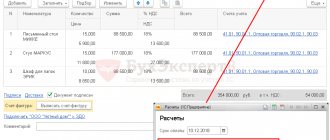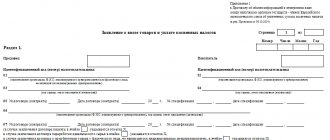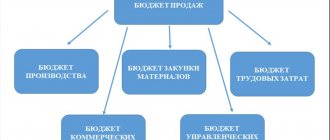Foreign exchange PBU 3/2006 was changed again. The previous version of the document lasted only a year. The new amendments continued the trend of convergence of Russian accounting provisions with international standards. This time the main innovation concerns the rules for converting advances into rubles.
At the end of January, amendments to PBU 3/2006 “Accounting for assets and liabilities, the value of which is expressed in foreign currency” were registered with the Ministry of Justice. Order of the Ministry of Finance of Russia
dated December 25, 2007 No. 147n, which introduced amendments, comes into force starting with the 2008 reporting.
That is, the quarterly balance sheet must be drawn up taking into account innovations.
The main change is the abolition of recalculation of advances on reporting dates. In addition, the rules for converting assets and expenses paid in advance into rubles have changed. As well as foreign exchange income in cases where an advance payment was received from the buyer. Let's take a closer look at the innovations.
Accounting for advances in currency e. and currency
As is known, funds in settlements expressed in foreign currency must be converted into rubles not only at the time of the currency transaction, but also on the date of reporting. But since 2008 there has been an exception to this rule.
Advances, prepayments and deposits, both received and issued, now need to be converted into rubles only once! On the date of their receipt or transfer. Such amendments were made to paragraph 7 of PBU 3/2006. As for the preparation of financial statements, for these purposes the prepayment will be taken into account according to the same assessment (clause 9 of PBU 3/2006 as amended).
This new treatment for advances is fully consistent with IFRS 21 The Effects of Changes in Foreign Exchange Rates.
Let us remind you: the previous version of paragraph 7 of PBU 3/2006 required the calculation of exchange rate differences on reporting dates for all foreign currency obligations. It did not contain any exceptions.
Advances, both received and issued, now need to be converted into rubles only once! On the date of their receipt or transfer. For accounting purposes, prepayments will be accounted for at the same valuation.
True, advances under contracts concluded in foreign currency or conventional units, but providing for payment in rubles, were not recalculated before. This was not written directly, but paragraph 5 of PBU 3/2006 allowed us to come to a similar conclusion.
It says here that when an exchange rate different from the official one is fixed in the agreement, the recalculation is carried out exactly according to it. In other words, if the parties have agreed that payment is made, say, at the rate of the Central Bank of Russia plus some percentage of it, then to convert currency and conventional units into rubles, exactly this rate must be used. However, paragraph 5 can also be read as an indication of fixing the exchange rate. That is, if the agreement provides for calculations at the exchange rate precisely on the date of payment, then from the moment it is received or transferred, including in the form of an advance, the exchange rate no longer changes - after all, the payment has already occurred. This means that as of the reporting date, exchange rate differences do not arise.
But organizations that received or transferred advances in foreign currency previously had to recalculate their amount at reporting dates. But since 2008, exchange rate differences in such a situation will no longer arise.
True, only in accounting. For the purposes of income tax, organizations, as before, will have to convert currency claims and obligations (which include advances) into rubles at the official exchange rate of the Central Bank of the Russian Federation on the last day of the reporting (tax) period (clause 8 of Article 272, Clause 10, Article 273 of the Tax Code of the Russian Federation). That is, quarterly or monthly. There are no concessions for prepayments.
Example 1
Aktiv LLC entered into a contract with a Polish company for the sale of its own products in the amount of 10,000 euros. The contract provides for shipment after receiving a 30% advance payment. An advance from a Polish counterparty in the amount of 3,000 euros (10,000 EUR x 30%) was received in a foreign currency account on March 26, 2008. The exchange rate on that day was 36.5050 rubles/EUR. And the exchange rate on March 31 (reporting date) was equal to 36.2560 rubles/EUR.
The accountant of Aktiv LLC reflected the receipt of the advance as follows:
DEBIT 52 CREDIT 62 subaccount “Advances received”
– 109,515 rub. (3000 EURx36.5050 RUR/EUR) – an advance payment has been received from the buyer.
Despite the fact that by March 31, 2008, the euro/ruble exchange rate had decreased, there is no need to recalculate the amount of the advance received. When drawing up the balance sheet for the first quarter, it should be taken into account in the amount of 109,515 rubles.
At the same time, in tax accounting, as part of non-operating income, Aktiv LLC reflected a positive exchange rate difference from the recalculation of the prepayment on the reporting date (the organization files reports quarterly) in the amount of 747 rubles. (3000 EURx(36.5050 rub./EUR – 36.2560 rub./EUR)).
In addition, the new edition of paragraph 10 of PBU 3/2006 contains a direct prohibition on recalculation after taking into account received and issued advances, prepayments and deposits in connection with changes in the exchange rate.
Is it necessary to recalculate the advance if it is returned if the exchange rate has changed?
Let’s assume that both counterparties are Russian companies that entered into an agreement in conventional units. Then the failed seller, when returning the advance, will transfer its ruble equivalent, determined at the exchange rate on the date of receipt. The same amount will be included in the buyer’s records as an advance payment. This means that the ban on recalculating the advance payment will not cause any problems.
It’s another matter when you need to return an advance received in foreign currency from a non-resident. It is unlikely that he will delve into the rules of Russian accounting: if a failed foreign buyer transferred, say, $1,000 in advance payment, then that is exactly what he will want to get back. At the same time, the ruble valuation of the advance at the exchange rate on the date of its receipt may now correspond to a completely different amount in dollars (both smaller and larger). This means that if you do not recalculate the amount of the advance at the time of return, then an amount equal to the difference between the current and previous ruble assessment of the advance will remain in the accounting records. But since recalculation is prohibited, then, in our opinion, it should not be recognized as exchange rate. It turns out that this will simply be some other income or expense that needs to be written off in correspondence with account 91.
What do the standards require?
IAS 21 The Effects of Changes in Foreign Exchange Rates provides rules for converting an amount into another currency in two cases:
- Converting the amount in a foreign currency into your functional currency;
- Translation of a transaction presented in the financial statements into the presentation currency.
When you record foreign currency transactions during the year, you translate the amounts denominated in the foreign currency into your functional currency.
Let us briefly recall what IAS 21 prescribes:
1. On initial accounting, you must translate all foreign currency amounts into your functional currency at the exchange rate in effect on the date of the transaction. [cm. paragraph IAS 21:21]
2. Subsequently (that is, after initial recognition), at each period-end close you must restate:
- All cash in foreign currency at the exchange rate at the reporting date;
- All non-monetary items in foreign currencies that are measured at historical cost—at the exchange rate on the date of the transaction;
- All non-monetary items denominated in a foreign currency that are measured at fair value using the exchange rate at the date of fair value measurement.
[cm. paragraph IAS 21:23]
To clarify the prepayment issue, the IASB issued IFRIC 22 Foreign Currency Transactions and Prepayments in 2021, which basically confirms that for exchange rate purposes, the transaction date is the date of initial recognition of the non-monetary asset or non-monetary liability arising as a result of making or receiving advance payment.
There are two important aspects of assessment:
- Transaction date;
- Nature of prepayment.
Transaction date.
It is clear that you should initially use the spot exchange rate on the transaction date for conversion.
But what is the date of the operation?
This is the date on which a transaction initially qualifies for recognition in accordance with IFRS.
Of course, this principle applies differently to different accounting objects, for example:
- For financial obligations : when a company becomes a party under the terms of a valid contract;
- For property, plant and equipment : when it is probable that future economic benefits from the asset will flow to the entity and the costs can be estimated reliably.
Although this sounds quite simple, there may be some difficulties in determining the date of the operation.
For example, you receive goods on day 1, an invoice for these goods on day 3, and pay for these goods on day 4. What will be the transaction date in this case? Which exchange rate should I apply on day 1, 3 or 4?
Let's look at this in our example below.
Nature of prepayment.
In relation to subsequent translation at the reporting date exchange rate, IAS 21 makes a distinction between monetary items and non-monetary items:
- Monetary items are translated using exchange rates;
- Non-monetary items are NOT restated but are recorded at original or historical rates.
Is the prepayment for your fixed asset monetary or non-monetary? It can be either a monetary or non-monetary item!
There is one more thing that matters:
The right to receive or the obligation to provide a fixed or determinable quantity of currency units.
Prepayments as such may serve or carry this function and you should evaluate each prepayment individually and carefully with this in mind.
Read the specific contract - what does it say about prepayment?
Is there a refund for your prepayment and under what conditions?
If there is a clause in the contract about refunding your deposit - what is the likelihood of this happening?
In most cases (in Western practice), prepayments made towards the purchase of fixed assets or any goods/services in general are rarely refundable, or the likelihood of this is very low.
Therefore, your down payment on the car (in most cases) is a non-monetary item and, as a result, you should NOT restate it using the rate at the balance sheet date.
The following example will show how to account for a down payment for the purchase of a vehicle if it is classified as a non-monetary asset.
Income-expenses prepaid
The changes affected not only the rules for converting advances into rubles, but also the procedure for determining the ruble value of income, assets and expenses. The new version of paragraph 9 of PBU 3/2006 establishes the following rules.
So, if an organization has received a 100% prepayment from a supplier, it will have to recognize foreign exchange earnings in the amount converted into rubles at the rate that was in effect on the date the advance was received. Well, in the case of partial prepayment, this rate should be used to recalculate only the advance proceeds, and the unpaid part of it should be converted into rubles in the general manner - at the rate on the date of sale.
This norm brings Russian accounting closer to international standards, but at the same time further distances it from tax accounting. After all, according to paragraph 8 of Article 271 of the Tax Code of the Russian Federation, income in foreign currency must be recalculated into rubles at the rate that was in effect at the time of sale. And there are no special provisions for revenue for which an advance was received in Chapter 25 of the Tax Code of the Russian Federation. In addition, this paragraph provides for the calculation of exchange rate differences at the time of sale of goods, works and services paid in advance in foreign currency.
Example 2
Let's continue example 1.
Aktiv LLC shipped partially paid products
April 7, 2008. The exchange rate on this date was 36.9310 rubles/EUR. The buyer repaid the remaining debt of 7,000 euros (10,000 - 3,000) on April 21. On this day, the exchange rate was 36.8720 rubles/EUR.
The accountant of Aktiv LLC reflected these transactions as follows.
April 7, 2008:
DEBIT 62 subaccount “Settlements with buyers and customers” CREDIT 90-1
– 368,032 rub. (RUB 109,515 + EUR 7,000 x RUB 36.9310/EUR) – revenue from the sale of own products is reflected;
DEBIT 62 subaccount “Advances received” CREDIT 62 subaccount “Settlements with buyers and customers”
– 109,515 rub. - the advance has been credited.
April 21, 2008:
DEBIT 52 CREDIT 62 subaccount “Settlements with buyers and customers”
– 258,104 rub. (7000 EUR x 36.8720 RUR/EUR) – payment received from the buyer;
DEBIT 91-2 CREDIT 62 subaccount “Settlements with buyers and customers”
– 413 rub. (7000 EUR x (36.9310 rub./EUR – 36.8720 rub./EUR)) – reflects the exchange rate difference from the recalculation of the buyer’s debt.
According to tax accounting data, revenue from the sale of products amounted to 369,310 rubles. (10,000 EUR x 36.9310 RUR/EUR).
At the same time, Aktiv LLC included in non-operating expenses the negative exchange rate difference from the recalculation of the prepayment on the date of sale in the amount of 2025 rubles. (3000 EUR x (36.9310 rub./EUR – 36.2560 rub./EUR)). As well as a negative exchange rate difference from the recalculation of the buyer’s debt at the time of its repayment in the amount of 413 rubles.
A similar approach is used when determining the ruble value of assets and expenses that the organization paid in advance in foreign currency. To recalculate in this case, you need to use the exchange rate on the date of transfer of the prepayment. Naturally, only in the part attributable to the advance payment.
As for tax accounting, here assets acquired for foreign currency are recalculated at the exchange rate on the day of transfer of ownership. Moreover, regardless of whether an advance was issued. This assessment procedure is given in paragraph 10 of Article 272 of the Tax Code of the Russian Federation. In addition, the prepayment amount itself must be recalculated at the time the assets are accepted for accounting.
Example 3
Passive LLC entered into a contract with a German company for the supply of goods worth 15,000 euros. The contract provides for delivery after receipt of a 20 percent advance. Passiv LLC transferred an advance payment in the amount
3,000 euros (15,000 EUR x 20%) February 28, 2008. The exchange rate on this date was 36.7500 rubles/EUR.
Ownership of the goods transferred to Passiv LLC at the time of registration of the customs declaration on March 10, 2008. On this day, the exchange rate was 36.5200 rubles/EUR. To simplify the example, we will not consider accounting and tax accounting of customs duties and fees, as well as VAT on imported goods.
Passive repaid the debt to the supplier on March 28, 2008. The euro exchange rate on this date was 36.2380 rubles/EUR.
The accountant of Passive LLC reflected the transactions for payment and receipt of goods as follows.
February 28, 2008:
DEBIT 60 subaccount “Settlements for advances” CREDIT 52
– 110,250 rub. (3000 EUR x 36.7500 rub./EUR) – advance payment is transferred to the supplier.
March 10, 2008:
DEBIT 41 CREDIT 60 subaccount “Settlements with suppliers”
– 548,490 rub. (RUB 110,250 + EUR 15,000 x 80% x RUB 36.5200/EUR) – imported goods are capitalized;
DEBIT 60 subaccount “Settlements with suppliers” CREDIT 60 subaccount “Settlements for advances”
– 110,250 rub. - the advance has been credited.
March 28, 2008:
DEBIT 60 subaccount “Settlements with suppliers” CREDIT 52
– 434,856 rub. (15,000 EUR x 80% x 36.2380 RUR/EUR) – payment was transferred to the supplier;
DEBIT 60 subaccount “Settlements with suppliers” CREDIT 91-1
– 3384 rub. (15,000 EUR x 80% x (36.5200 rub./EUR – 36.2380 rub./EUR)) – a positive exchange rate difference is reflected.
In tax accounting, Passiv LLC included in non-operating income the positive exchange rate difference from the recalculation of the debt on the date of its repayment in the amount of 3,384 rubles. And in addition, as a non-operating expense, the exchange rate difference from the recalculation of the advance payment, which amounted to 690 rubles, was taken into account. (3000 EUR x
(36.7500 rub./EUR – 36.5200 rub./EUR)).
As for the cost of goods, for income tax purposes it amounted to 547,800 rubles. (15,000 EUR x 36.5200 RUR/EUR).
A logical question arises: how to recalculate revenue into rubles if the advance payment was received last year or even earlier, and how to calculate the ruble value of assets and expenses paid in advance also before the new edition of PBU 3/2006 came into force? Does the new procedure apply to them?
In our opinion, yes. An indirect confirmation of this can be paragraph 3 of Order No. 147n of the Ministry of Finance of Russia dated December 25, 2007, which amended PBU 3/2006. This paragraph requires recalculating the value of long-term securities as of January 1, the valuation of which, in accordance with the previous edition of PBU 3/2006, did not change due to exchange rate fluctuations on reporting dates. It seems to us that if the Russian Ministry of Finance allowed a differentiated approach to the recalculation of assets and liabilities - depending on the moment of their acceptance for accounting - there would not be this paragraph in Order No. 147n.
However, if to determine the amount of income, as well as the cost of acquired assets and expenses incurred, we apply the exchange rate on the date of receipt of advances, then the balance will remain on accounts 60 and 62 after the prepayment is offset. After all, advances were previously recalculated. And the last time the exchange rate difference was calculated was on December 31, 2007. How and when should this balance be written off, which represents the difference between the estimate of the advance at the exchange rate as of December 31, 2007 and the date it was reflected in accounting?
By analogy with the same long-term securities, it would be advisable to write off this difference as early as January 1, 2008. Moreover, it should not be taken into account as part of other income and expenses, but reflected on account 84. It makes no sense to wait for the shipment or delivery of goods, since this will not affect the amount of the difference in any way. As for the account, it would be incorrect to write off the difference to account 91, since it has nothing to do with other expenses and income of the reporting period.
Only for some reason the order that approved the amendments to PBU 3/2006 does not provide for any transitional provisions for advances. There is no hope that the financial department will issue any clarification on this matter. Suffice it to remember that over the past few years, the meaning of those individual letters that were issued by the department for regulation of state financial control, auditing, accounting and reporting of the Ministry of Finance of Russia boiled down to the fact that financiers “on the practice of applying the regulatory legal acts of the ministry” do not give explanations. In other words: if you need advice, contact the auditors. We have presented our point of view, but it’s up to you to listen to it or not. For our part, we will still try to clarify the position of the Russian Ministry of Finance.
Example 1. Advance payment for the purchase of a car.
Your functional currency is EUR, and you have contracted to manufacture a machine with a US supplier.
The total cost of the car is $100,000, and you have agreed to pay this amount in 2 installments:
- 1st payment: $30,000 after signing the contract;
- 2nd payment: $70,000 after delivery of the machine.
The corresponding event dates and exchange rates are shown in the table:
| date | Event | Exchange rate |
| 4 February 20×7 | Agreement signed | 1.3552 |
| 11 February 20×7 | Advance payment made | 1.3391 |
| 31 December 20×7 | Reporting date | 1.3791 |
| January 15 20×8 | Delivery of the machine and transfer of ownership | 1.3606 |
| January 20 20×8 | Invoice received | 1.3566 |
| February 2 20×8 | Invoice paid | 1.3498 |
How and when should these transactions be accounted for?
February 4, 20×7: agreement signed.
On 4 February you entered into a contract, but no asset can be recognized in accordance with IAS 16 Property, Plant and Equipment because the recognition criteria are not met.
[cm. See also full text of IAS 16]
Likewise, you need to evaluate whether you should recognize any financial liability or not.
In most cases, a financial liability associated with firm liability is not recognized until the goods are delivered (or shipped, depending on Incoterms) and the risks and rewards of ownership have transferred.
Conclusion: The event is not recorded on 4 February 20X1.
February 11, 20×7: Down payment of $30,000 made.
As of February 11, the machine recognition criteria under IAS 16 are still not met.
Remember that you don't have a car yet.
At the moment you cannot dispose of the car, and as a result.
Some companies use this practice: they simply post a prepaid payment to the debit of the Fixed Assets account, crediting the cash account. This is NOT correct , since the company does not have a car yet.
So what is the correct entry for February 11th?
- Debit. Assets - prepayment for fixed assets: 22,403 euros ($30,000 / 1.3391).
- Credit. Cash: €22,403.
In practice, you will determine the conversion rate depending on the circumstances. If you paid $30,000 from an account to:
- EUR - you use the rate at which your bank recalculated the transaction;
- USD - You apply official exchange rates. For example. rate of the European Central Bank.
31 December 20×7: reporting date.
In this case, the $30,000 down payment for the car is non-monetary.
This means you don't have to recalculate it. Your statement of financial position shows the prepayment at the historical rate, which is €22,403.
January 15, 20×8: delivery of the machine and transfer of ownership.
This is the exact date when you take control of the car. At this point, the recognition criteria under IAS 16 are met and you can recognize the machine as your own property, plant and equipment.
However, subsequently, on January 20, 20×8, an invoice was issued for the remaining cost of the car in the amount of $70,000.
What exchange rate should be applied?
On the date of the transaction.
In this case, the date of the operation is January 15. That is, the date on which the machine was delivered and the delivery gave rise to a financial liability.
As a result, your wiring should be like this:
- Debit. Assets - car (OS): 51,448 euros ($70,000 / 1.3606).
- Credit. Accounts payable - suppliers: EUR 51,448.
This is a very strict application of IAS 21 rules. Let's try to apply them a little more practically.
It may be acceptable to apply the exchange rate to the invoice date rather than the machine delivery date, especially if there is a slight delay in the invoice.
However, if there are some significant changes in the foreign exchange markets, you must adhere to the delivery date of the machine.
January 15, 20×8: What about your advance payment?
At the delivery date, you need to recognize the machine and estimate its cost.
Part of the cost of the car is an advance payment paid after signing the contract. The cost of a car is also a non-monetary item - it is not recalculated and is taken into account at the historical rate.
So you don't recalculate anything and your wiring will be like this:
- Debit. Assets - car (OS): 22,403 euros.
- Credit. Assets - prepayment for OS: 22,403 euros.
Here you might object - the date the machine appears on the financial statements is the delivery date, so we must convert the total cost of the machine to $100,000 at the delivery date exchange rate.
Some companies take this approach, but it is not entirely correct and represents a judgment about the fair amount of the transaction.
The real point is that when the machine is delivered, the asset recognition criteria are met and you need to recognize the machine in its entirety as one item of property, plant and equipment.
But estimating its value is another matter.
Your actual cost is:
- $30,000, translated at the exchange rate on the date of the first payment and
- $70,000, translated using the exchange rate at the delivery date.
It should be understood that at the time of delivery, the $30,000 prepayment is no longer a dollar asset. This is your asset in euros. Why?
Try to look at it this way: most non-monetary assets cease to be “foreign currency” assets the moment you recognize them in your functional currency accounts.
So you don't have an asset (prepayment) of $30,000 on your books - instead you have an asset of €22,403.
February 2, 20×8: payment of invoice.
Everything should be completely clear here. You record your payment using the spot exchange rate on the payment date and any exchange rate difference is recognized in the income statement.
Your wiring will be like this:
- Debit. Accounts payable - suppliers: €51,448 ($70,000 / 1.3606).
- Credit. Cash: 51,860 euros.
- Debit. Profit/loss - loss from exchange rate differences in the amount of 412 euros (51,860 - 51,448).
A summary of all the operations described above is given in the table:
| Operation | Amount in USD | Well | Amount in EUR | Debit | Credit |
| February 11, 20×7 — Prepayment | 30 000 | 1,3391 | 22 403 | Assets - prepayment for OS | Cash (bank account) |
| January 15, 20×8 — Machine delivery | 70 000 | 1,3606 | 51 448 | Assets - machine (OS) | Accounts payable - suppliers |
| — | — | 22 403 | Assets - machine (OS) | Assets - prepayment for OS | |
| February 2, 20×8 – Payment of invoice | 70 000 | 1.3498 | 51 860 | Cash (bank account) | |
| — | — | 51 448 | Accounts payable - suppliers | ||
| — | — | 412 | Profit / loss - loss from exchange rate differences |
Average conversion rate
The new edition of paragraph 6 of PBU 3/2006 has been supplemented with a paragraph that allows you to convert currency into rubles at the average rate for a month or a shorter period, say a week. This can be done if several conditions are met. Firstly, exchange rate fluctuations should be insignificant. And secondly, it is necessary to have a large number of homogeneous operations. The materiality criteria, as well as a deciphering of what number of similar transactions the company considers to be large, must be given in the accounting policy.
However, the 5% deviation rule is hardly appropriate here. In our opinion, we can talk about insignificant changes when the rates for different days differ from each other within a penny. But at the moment, even over a week, not to mention a month, there is often a much more significant fluctuation in the exchange rate. Therefore, it is too early to use the granted right to recalculate at the average rate. This amendment is a foundation for the future.









